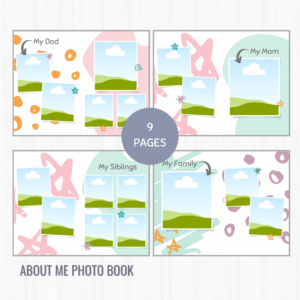Welcoming a child into a dayhome setting is a significant transition that requires careful planning and consideration. As dayhome providers, ensuring a smooth and positive transition for both children and their families is paramount. In this blog post, we’ll explore some effective strategies to make this transition a seamless and enjoyable experience for everyone involved.
Establishing strong connections is the foundation of a successful transition. Start by creating opportunities for the child and their family to meet you and become familiar with the dayhome environment. This could look like having the child and their parent over for a play date before starting care at your home. Hosting informal meet-and-greet sessions can help build trust and familiarity, making the child feel more comfortable in their new surroundings.
Maintain open and transparent communication with the child’s family. Encourage parents to share valuable information about their child’s routine, preferences, and any special considerations. This can help ensure that your schedules and routines align well with the families, making it easier for the child to settle in. If there is an area where your schedules and routines do not align, consider speaking with the family to see if you can work together to get those routines better aligned. Establishing a collaborative relationship with parents fosters a sense of partnership, ensuring that everyone is on the same page when it comes to the child’s needs and expectations.
Encourage parents to provide familiar objects from home, such as a favorite toy or blanket. These items are comforting reminders and can help ease the child’s anxiety during the transition. Having a familiar object in the dayhome creates a sense of continuity between home and care settings. You can also ask the family to create an “About Me” book where photos of the child’s family and familiar aspects of home are featured. ADSN has an About Me Flipbook Template available inside the ADSN Portal for ADSN Members.
Consistent routines provide a sense of predictability and security for children. Although it can be challenging to stick to routines with a new child settling in, consistency in meal times, nap schedules, and play activities can help children feel more at ease in their new environment.
While it’s natural for parents to want to ensure their child feels secure, lingering goodbyes can sometimes heighten a child’s anxiety. Encourage parents to give their child a big hug and a reassuring word like “I will be back to pick you up after work, I love you”. Most often, the child settles quite quickly after the parent has left.
By implementing the strategies discussed in this blog post, dayhome providers can create an environment that not only supports the child’s adjustment but also nurtures a positive experience for both the children and their families. Recognizing the uniqueness of each child and remaining flexible in your approach ensures that the transition is not only seamless but also enjoyable for everyone involved.
Transitions can be stressful for both families and dayhome providers. Remember to give yourself grace as everyone adjusts to a new normal!








Responses